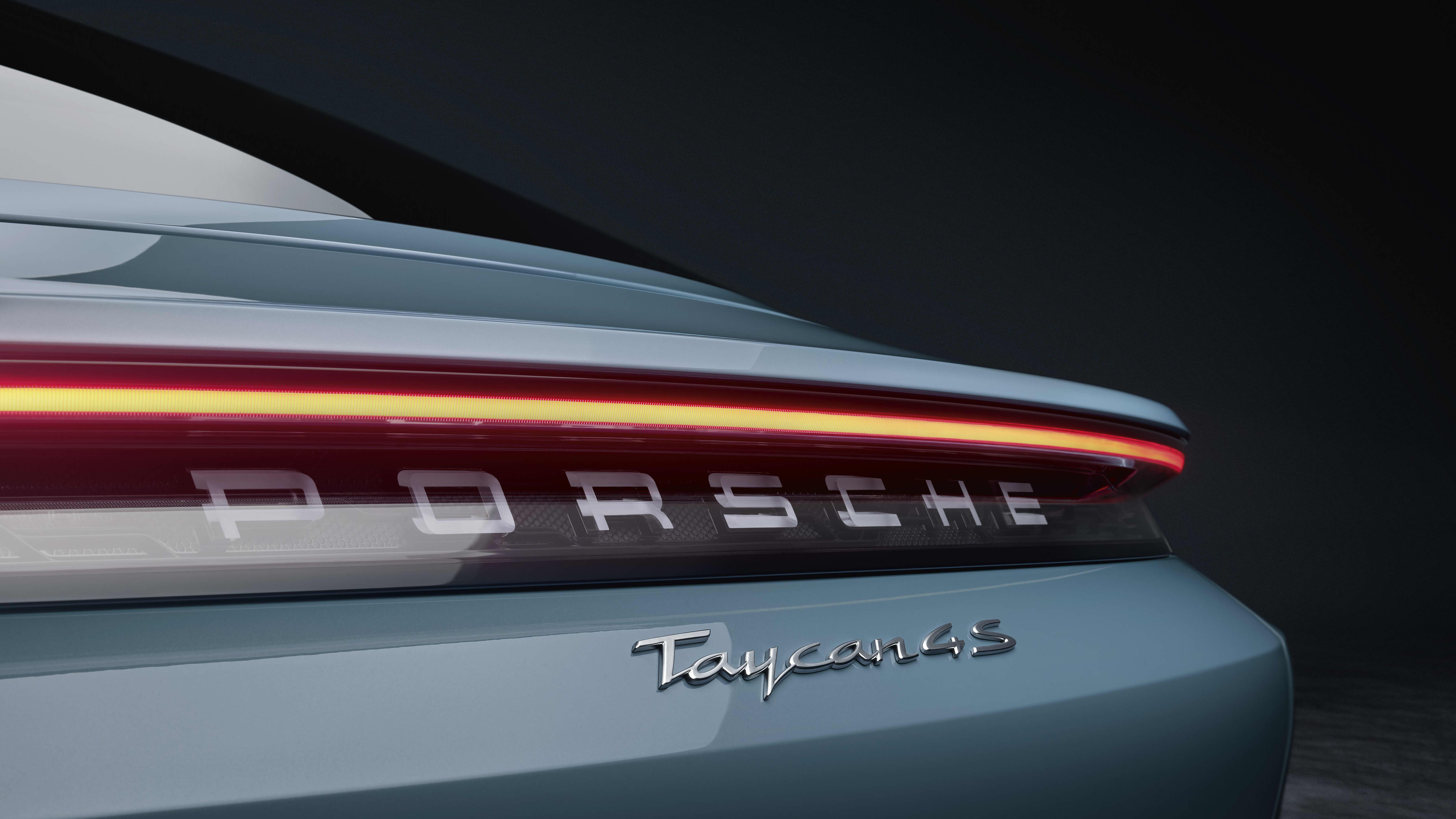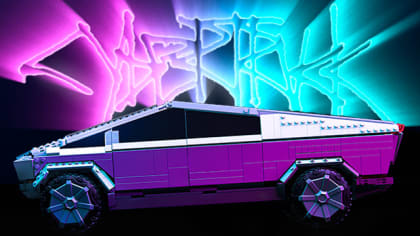Sometimes, the real world range ratings for EVs can be a bit... off.
For electric vehicles, the EPA-rated mileage range can vary wildly from real-world range tests. Why is that?
By Roy Nakano
Mon, Mar 15, 2021 09:58 AM PST
Charting the Real World Range Ratings of Electric Cars
It’s no shock the actual mileage range of an electric car doesn’t always match the EPA-rated range of the vehicle. But certain EV models consistently do better in the real world than the EPA ratings, while others seem to do consistently worse.
When Porsche introduced its highly anticipated Taycan 4S electric sports car in 2020, the automotive community was shocked that its EPA-rated range was a measly 203 miles. But when Edmunds tested the Taycan, it concluded its real world range was a phenomenal 323 miles.
Conversely, the publication found the real world mileage range of the Tesla Model X Long Range that year was 10.4 percent below its EPA-rated range—294 instead of the rated 328 miles.
Different Publications, Different Real World Ratings

One publication’s real world is not the same as another. Edmunds says it tests EVs with a full battery charge and drives it approximately 60 percent in city conditions and 40 percent on the highway until the battery is almost depleted.
In contrast, InsideEVs’ “real world” test consists almost entirely of driving the car at a constant speed of 70 miles per hour. “We want to make it clear our range tests aren't perfect. There are variables simply out of our control like wind, traffic, and weather. However, we do our best to control what we can.”
The differences in the two approaches can be seen when comparing the range results of the 2020 Chevrolet Bolt EV, which carries an EPA rating of 259 miles. Edmunds says its real world test yielded a range of 277 miles for the Bolt. InsideEVs, on the other hand, yielded 226.
However, even InsideEVs got 278 miles out of the EPA-rated 203 mile 2020 Porsche Taycan 4S, leading to the conclusion that the car does better than the EPA ratings, no matter whose real world we’re in.
United Kingdom-based What Car? established its own set of parameters to determine the “Real Range” of electric vehicles.
These parameters include driving the vehicle until the battery is depleted, fully charging it thereafter, leaving the car overnight in an air-conditioned, 18 degree centigrade chamber, checking the tire pressures to manufacturer’s recommendations, driving when the ambient air temperature is between 10 and 15 degrees centigrade, setting the interior climate control to 21 degrees centigrade, keeping the headlights on, selecting “normal” during the duration of the 19.4-mile route, which simulates mix of stop-start urban traffic, rural roads and motorways.
“At the end of the test, the car is plugged back in and the energy required to return its battery to full is measured. Knowing the kWh required for the test route and for a full recharge from flat enables us to calculate the Real Range,” says What Car?.
The EPA World

In the world of the U.S. Environmental Protection Agency, properly testing the range of an electric vehicle means “the battery is fully charged, the vehicle is parked overnight, and then the following day the vehicle is driven over successive city cycles until the battery becomes discharged (and the vehicle can no longer follow the city driving cycle).”
In its November 14, 2017 draft summary entitled “EPA Test Procedures for Electric Vehicles and Plug-in Hybrids", the agency goes into more detail about how it tests electric cars for range:
“After running the successive city cycles, the battery is recharged from a normal AC source and the energy consumption of the vehicle is determined (in kW-hr/mile or kW-hr/100 miles) by dividing the kilowatt-hours of energy to recharge the battery by the miles traveled by the vehicle. The recharge energy includes any losses due to inefficiencies of the manufacturer’s charger. To calculate the energy consumption in units of mpge (miles/gallon equivalent) we use a conversion factor of 33.705 kilowatt-hours of electricity per gallon of gasoline (which is basically a measure of the energy in gasoline (in BTUs) converted to electricity). The city driving range is determined from the number of miles driven over the city cycle until the vehicle can no longer follow the driving cycle.”
There’s more—a lot more—but the biggest departure from the “real world” tests is that the EPA measures everything in a laboratory, or more specifically, on a stationary dynamometer.
The “Worldwide Harmonised Light Vehicle Test Procedure”
What the EPA is to the USA, the “Worldwide Harmonised Light Vehicle Test Procedure”, also known as the WLTP, is to Europe. Introduced in 2017, the WLTP is regarded as a more reliable gauge of electric car range than the older European standard, the “New European Driving Cycle” (NEDC)—a product of the 1980s, and last updated in 1997.
“In addition to being old and outdated, [the NEDC] is viewed less favorably because of its lab-based approach that collects data under ideal conditions rather than scenarios that are more representative of real-world driving,” says J.D. Power’s Jessica Shea Choksey.
But between the three systems, Choksey says, “[T]he EPA testing procedures are more rigorous than the NEDC and the WLTP, resulting in estimates that are more accurate for real-world driving on American roads.”
Tesla Takes a Thrashing in the Real World Range Ratings

While the “real world” range ratings are all over the map, Tesla almost universally misses the EPA mark in all the various publication tests. The most extreme case being the 2020 Tesla Model 3 Long Range AWD, which was EPA-rated at 330 miles and Real Range-rated by What Car? at 211 miles. The publication admits, however, that its results were affected by heavy rain.
But their ratings of the other Teslas didn’t fare much better. What Car? says the Model 3 Standard Range Plus, which was EPA-rated back in 2020 at 250 miles, yielded 181 miles in the publication’s “Real Range” test.
Car and Driver claims the optimistic EPA ratings of Tesla vehicles is due to the manufacturer knowing how to play the range game better than anyone else while still following the EPA's rules. Says Car and Driver’s David Vanderwerp, “Among EV makers, Tesla has been at this game longer than most, so it's not surprising that it has figured out the tricks to maximizing its EPA numbers.”
According to Vanderwerp, “it seems that Tesla allows its cars to use more of a pack's capacity than other manufacturers do. We suspect that's partially because the company puts some of the responsibility on the driver to choose how high to charge the battery, noting that anything above a 90 percent charge should be reserved only for trips, not everyday use.”
You can read about the other tricks of the EPA electric range trade in Vanderwerp’s article, “The Secret Adjustment Factor Tesla Uses to Get Its Big EPA Range Numbers”, in the September 2020 issue of Car and Driver.
Electric Car Range Ratings Compared
We’ve gathered the various “real world” mileage range ratings available for the most popular electric cars sold in the USA, and compared them with the EPA rating. Whenever available, we’ve also included the European WLTP ratings. Here is what we found. All vehicles are for the 2021 model year, unless otherwise noted:
Chevrolet Bolt EV
EPA: 259 miles
Car and Driver: 180 miles at 75mph; 268 miles in Death Valley for a 2020 model (“during an unorthodox range test in California's Death Valley, we were able to exceed the EPA's estimated range in the real world”)
Edmund: 277 miles
InsideEVs: 226 miles
Ford Mustang Mach-E Premium AWD
EPA: 270 miles
Car and Driver: 190 miles at 75mph
Edmunds: 304 miles
Green Car Reports: 219 miles at 75mph
InsideEVs: 255 miles at 70mph
2020 Hyundai Kona EV (64kWh version)
EPA: 258 miles
WLTP: 300 miles
Car and Driver: 160 (2019 model in a Michigan December)
Green Car Reports: 637 miles at 20 mph constant
What Car?: 259 miles
2020 Jaguar i-Pace
EPA: 234 miles (253 for 2021 model)
WLTP: 292 miles
Car: 225 miles
Driving Electric: 210-220 miles
What Car?: 253 miles
Kia e-Niro
EPA: 239 miles
WLTP: 282 miles
Carwow: 255 miles
What Car?: 253 miles
2020 Nissan Leaf S Plus
EPA: 226 (same for 2021)
WLTP: 239 miles
Car and Driver: 180 miles on its highway fuel-economy test route for the Leaf SV Plus (EPA-rated at 215 miles)
InsideEVs: 185.4 miles
What Car?: 217 miles
2020 Porsche Taycan 4S
EPA: 203 miles
WLTP: 254 miles
Autoblog: 300.5 miles
Edmunds: 323 miles
InsideEVs: 278 miles
Road & Track: 294 miles
2020 Tesla Model S Performance
EPA: 326-348 miles (evolved over the model year)
WLTP: 365 miles
Car and Driver compared the 2020 Porsche Taycan Turbo S (EPA-rated at 192 miles range) versus the 2020 Tesla Model S Performance (then EPA-rated at 326 miles range). Running both cars at 75 mph for 100 miles, the Taycan yielded a 209-mile range while the Tesla yielded a range of 222 miles.
Tesla Model 3
Standard Range Plus
EPA: 263 miles
WLTP: 267 miles
Battery Bro: 190 miles (75mph with heater engaged highway test)
Bjorn Nyland: 186 miles at 75mph; 249 miles at 56mph for 2019 model
What Car?: 181 miles for 2020 model
Zap Map: 252 miles for 2021 model
Long Range AWD
EPA: 353 miles
WLTP: 360 miles
What Car?: 211 miles for the 2020 model, which was EPA-rated at 322 miles.
Performance
EPA: 315 miles
WLTP: 352 miles
What Car?: 239 miles for 2020 model
About The Author

Roy Nakano gave birth to LACar in the late '90s, having previously delivered LA Audio File back in the '80s. Aside from the occasional review, Roy likes to stray off the beaten automotive path: "Six Degrees of Reparations" reflected on the regretful ethical paths taken by car companies throughout history. "Traveling Through the Past and Present of the Green Book" looked at businesses that took a stand against racism and the man that wrote the book on where to find them. "Best Cars to Drive in Rush Hour Traffic" was an LACar guide published in the pre-GPS era. "In Search of the First Datsun 510 Tuner" looked at one of the milestones in the origin of import tuners. And "Us vs Them" examines the instances when rivalry among automotive enthusiasts crossed the line to violence and even death.







